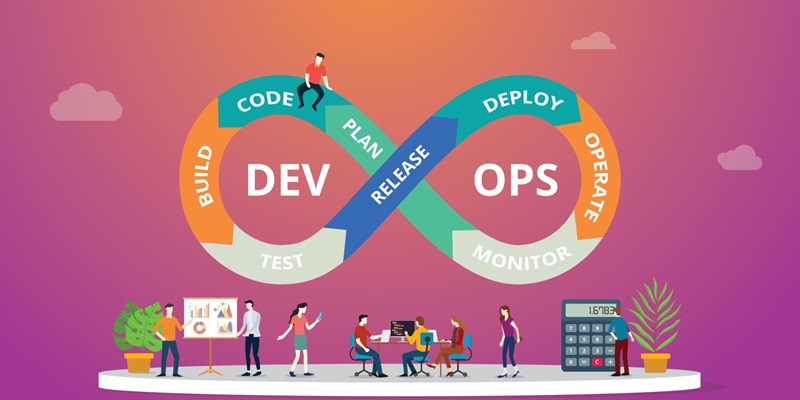Cloud-native DevOps has become increasingly popular as organizations look for ways to deliver applications and services faster and stay competitive in a rapidly evolving market. By combining cloud computing and DevOps principles, organizations can achieve faster delivery times, improved collaboration, and the ability to scale applications as needed. In this article, we will explore the benefits of cloud-native DevOps and how organizations can successfully implement it.
The benefits of cloud-native DevOps include
One of the primary benefits of cloud-native DevOps is the ability to deliver applications and services at a faster pace. By leveraging cloud computing resources, organizations can quickly provision and deploy their applications without the need for extensive hardware setup. This agility allows organizations to respond to market demands more effectively and stay ahead of their competitors.
Flexibility in deploying and scaling applications
Cloud-native environments provide organizations with the flexibility to quickly deploy and scale applications. With traditional on-premises infrastructure, scaling applications can be a time-consuming process. However, with cloud-native DevOps, organizations can leverage the elasticity of the cloud to automatically scale their applications based on demand. This flexibility ensures that applications can handle increased user traffic and maintain optimal performance.
Automation of the software development life cycle
Cloud-native DevOps enables organizations to automate the entire software development lifecycle, reducing delivery time. Through the use of continuous integration and continuous deployment (CI/CD) pipelines, developers can automate tasks such as code compilation, testing, and deployment. This automation streamlines the development process and eliminates human error, resulting in faster and more reliable software delivery.
Improved collaboration between development and operations teams
Another benefit of cloud-native DevOps is improved collaboration between development and operations teams. Traditionally, these teams worked in silos, leading to delays in software delivery and miscommunication. With cloud-native DevOps practices, development and operations teams work closely together, sharing knowledge and taking joint ownership of the application lifecycle. This collaboration leads to faster issue resolution, smoother deployments, and an overall improvement in software quality.
Better communication and collaboration led to faster delivery
Cloud-native DevOps also allows for improved communication and collaboration, resulting in expedited delivery of applications and services. Through the use of shared tools and platforms, teams can easily collaborate and share code, facilitating coordination and swift software updates. Moreover, cloud-native environments offer teams real-time insights and visibility into application performance and usage, empowering them to make informed decisions and prioritize development efforts accordingly.
Cost reduction through cloud computing resources
By leveraging cloud computing resources and pay-as-you-go pricing models, cost reduction is possible with cloud-native DevOps. Organizations no longer need to invest heavily in expensive hardware infrastructure, as cloud platforms offer scalable resources. Additionally, organizations only pay for the resources they use, eliminating the need for upfront capital investments and reducing overall operational costs.
Adaptability to market conditions and customers’ needs
Cloud-native DevOps enables organizations to adapt quickly to market conditions and customer needs. By utilizing cloud infrastructure, organizations can respond rapidly to changes in demand, seamlessly scaling their applications to meet customer expectations. This adaptability allows organizations to stay competitive and deliver timely updates and new features to their users.
Quick development and deployment of new applications and services
With cloud-native DevOps, organizations can quickly develop and deploy new applications and services. Through the use of microservices architecture and containerization technologies like Docker and Kubernetes, applications can be broken down into smaller, independently deployable components. This modular approach allows teams to work on different parts of the application simultaneously, resulting in a faster time to market and improved agility.
The cultural shift required for implementing cloud-native DevOps
Implementing cloud-native DevOps requires a shift in organizational culture, embracing collaboration and continuous improvement. It demands a transition from siloed team structures to cross-functional teams that work together towards a common goal. This cultural shift encourages open communication, knowledge sharing, and a willingness to experiment with new tools and technologies. Additionally, organizations need to foster a supportive and learning-oriented environment to encourage innovation and drive continuous improvement.
Monitoring tools
Monitoring tools are essential for tracking the performance, availability, and usage of applications in a cloud-native environment. They provide real-time insights into system performance, allowing teams to identify and address issues promptly. Monitoring tools also enable proactive monitoring and automatic scaling, ensuring optimal application performance and minimal downtime.
Automation Tools
Automation tools play a critical role in streamlining the software development lifecycle. Tools like CI/CD pipelines, configuration management, and infrastructure-as-code allow organizations to automate repetitive tasks, reducing the likelihood of human error and enabling faster deployments. Automation tools also enable organizations to adopt DevOps practices such as continuous integration and continuous deployment, enabling quicker feedback loops and faster software delivery.
Cloud-native DevOps offers numerous benefits for organizations looking to deliver applications and services faster, scale efficiently, and adapt to market demands. By leveraging cloud computing resources, automating processes, improving collaboration, and investing in the right tools, organizations can harness the power of cloud-native DevOps and drive innovation in their software development lifecycle. However, it is crucial to recognize that implementing cloud-native DevOps requires not only technical changes but also a cultural shift towards collaboration, continuous improvement, and a focus on delivering value to customers.

